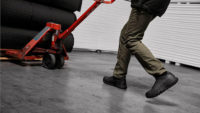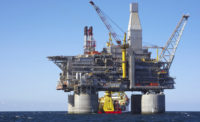Advances in gas monitor technology cater to facility’s specific needs

The attention to safety is the top concern for every company across every industry. Companies are spending a significant amount of money each year providing safety training, PPE, and other safety devices for their employees. If possible, the first course of action for employers is to try and engineer out the safety risk. If an engineered solution to remove the safety concern is not feasible, then companies are taking the next steps by providing the necessary equipment in order to mitigate danger. This can include items such as hand held portable gas monitors, fixed gas detection instrumentation, fall protection equipment, and many more based on the hazard present.
In the oil and gas industry, one of the potentially always present dangers is the presence of toxic gases such as hydrogen sulfide or carbon monoxide. These are two of the most common toxic gases found across the globe and highly present in the oil and gas industry. Another always potentially present hazard is the presence of combustible gases, such as methane, hydrogen, natural gas, and many other hydrocarbons.
Handheld portable gas instruments usually outfitted with gas sensors for oxygen levels, hydrogen sulfide, carbon monoxide and a sensor for the detection of hydrocarbons are provided to employees for personal safety. To protect a company’s assets, such as an oil refinery or a natural gas distribution facility companies rely on fixed gas instrumentation. These instruments are installed across a facility providing 24/7/365 detection for the presence of any hydrocarbons and or toxic gases based on the specific needs of the facility.
Pellistor and NDIR sensors
For decades, manufactures of both handheld portable and fixed gas instrumentation have relied on either Pellistor (Cat-Bead), or Nondispersive Infrared (NDIR) sensor technology that are integrated into their instruments for the detection of hydrocarbons. The technology of these sensors is well proven, trusted, reliable, and understood. You will find across the globe the oil and gas industry has deployed thousands of gas detection instruments, both portable and fixed using one or both of these technologies in their facilities.
As a life safety device the accuracy of the gas levels detected is of the utmost importance. This is particularly true in the oil and gas industry as the presence of any one or a multiple of different hydrocarbons could be present at any given time. One known limitation of Cat-bead and NDIR sensor technology is they are only accurate to the gas they are calibrated to. The accuracy in gas readings could be off by greater than 30%, depending on the gas the sensor is calibrated to and the gas it is then exposed to. Another requirement for Cat-bead and NDIR sensors is the need for routine calibration. Sensor calibration is required to ensure the sensor's accuracy over its lifetime. Calibration interval is very frequent for Cat-bead and usually once or twice a year for NDIR. Calibration takes time and is an ongoing expense for employers, raising the total cost of ownership for maintaining their gas detection instruments.
MEMS sensors
With the advancements in sensor technology, micro-electromechanical system (MEMS-based) sensor technology was introduced to gas detection instrumentation manufacturers in 2019. Its transducer is a micro-machined membrane with an embedded Joule heater and resistance thermometer. The MEMS transducer is mounted onto a PCB and open to the surrounding environment. The presence of a flammable refrigerant gas causes changes in the thermodynamic properties of the air/gas mixture that are measured by the transducer and reported accurately to the user.
MPS gas sensor technology
This technology, with built-in environmental compensation for temperature, pressure, and humidity, detects and quantifies over a dozen of the most common hydrocarbon gases with the one factory calibration.
The oil and gas industry now has new sensor technology that not only improves the gas sensor's accuracy to multiple gases, but also reduces their total cost of ownership by eliminating the need for routine calibrations.
Conclusion
Cat-bead, and NDIR technology are here to stay as they have a great track record for performance for a countless number of applications. However, with multiple leading manufacturers adapting the MPS sensor technology into their product range for hand held portables, area monitors, and fixed gas transmitters, the oil and gas industry can improve their safety initiatives by utilizing sensor technology into their fleet of gas detection instrumentation.
Looking for a reprint of this article?
From high-res PDFs to custom plaques, order your copy today!








